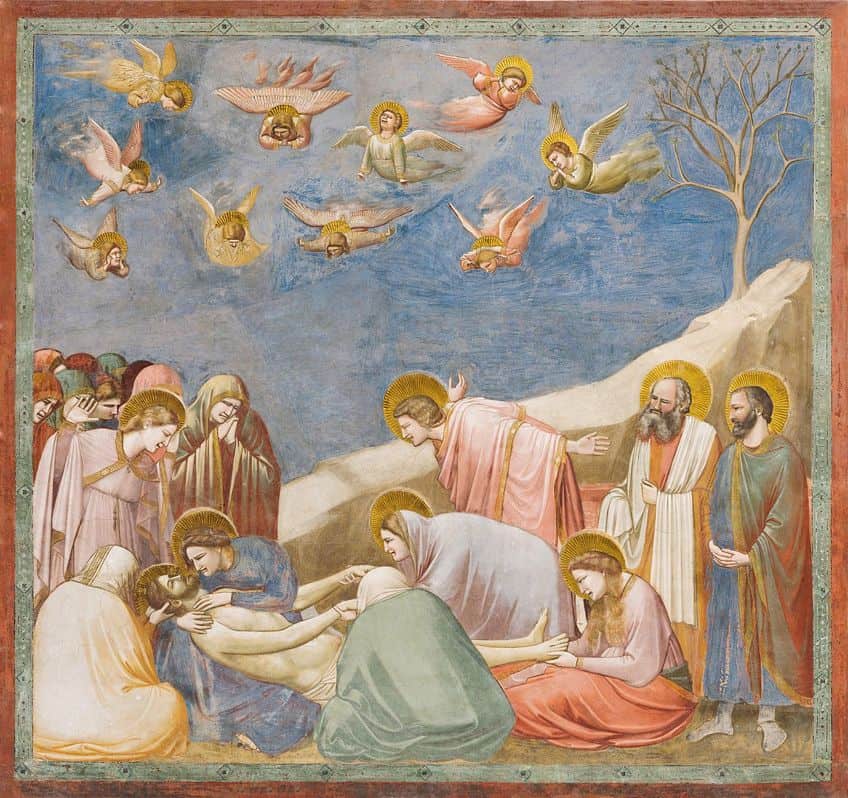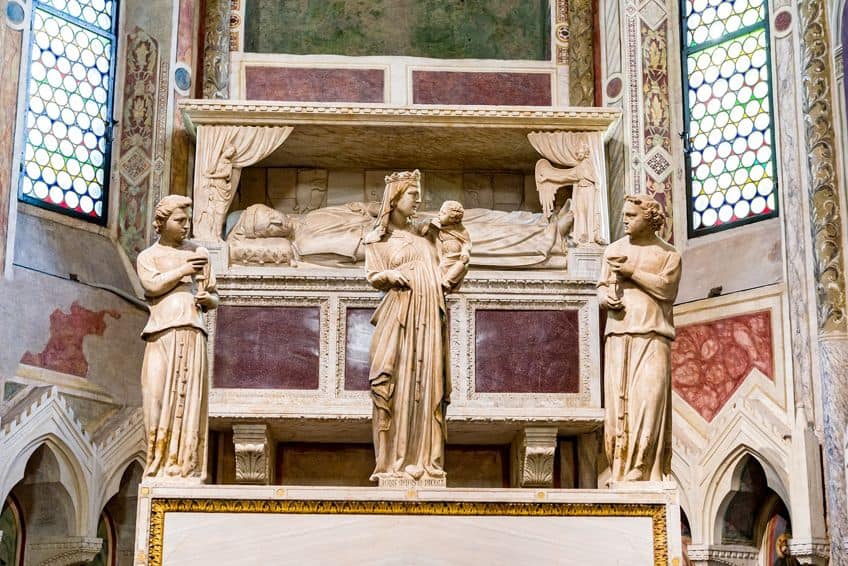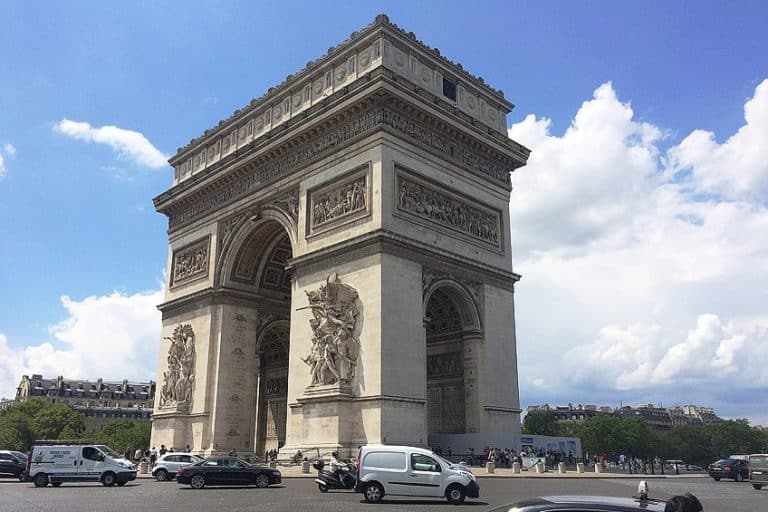Scrovegni Chapel – Explore Giotto’s Arena Chapel
What is the Scrovegni Chapel and why did the Scrovegni family build and then hire Giotto to decorate Arena Chapel in Padua? The Scrovegni Chapel is a small church in Padua, which is located in the Veneto region in Italy, and it is also known as Giotto’s Arena Chapel. It is called that because Giotto painted the magnificent Scrovegni Chapel frescoes. Let us find out what makes Scrovegni Chapel so special.
An Exploration of Scrovegni Chapel
| Architect | Enrico degli Scrovegni (d. 1336) |
| Date Completed | 1305 |
| Height (meters) | 12.65 |
| Function | Chapel |
| Location | Padua, Italy |
The Scrovegni chapel was commissioned by a wealthy banker called Enrico Scrovegni in the early 14th century as a sort of atonement for the crimes of his family, notably his father, who was infamous for extortion. It is regarded as an Italian art masterpiece and a notable instance of the early Renaissance era. The frescoes are famous for their splendor, naturalism, and emotional intensity, and are regarded as some of the most notable artworks of the 14th century. They shed light on the theological beliefs and social norms of the time, as well as the Renaissance’s rising focus on humanism and individuality. The Scrovegni Chapel is also a popular pilgrimage destination and has played a vital role in Padua’s cultural and religious life for centuries.

Description of the Scrovegni Chapel Frescoes
Giotto and his crew frescoed the whole interior of the chapel, which included not only the walls but also the ceiling. The most important feature is a series of long cycles depicting the lives of the Virgin and Christ. A massive depiction of the Last Judgment is painted on the wall at the back of the church, through which the sanctuary is entered. In 1303 the chapel was dedicated to the sacred figure of Santa Maria della Carità.
A significant part of Giotto’s fresco cycle is dedicated to the story of the Virgin Mary and her contribution to human deliverance.
Marchetto da Padova is believed to have composed a motet at the dedication on the 25th of March, 1305. Because it was erected on land acquired by Enrico Scrovegni that adjoined the location of the ruins of an old Roman arena, the church is also referred to as Giotto’s Arena Chapel. For a generation that existed before the chapel was erected, an open-air procession and solemn portrayal of the Annunciation to the Virgin had taken place in the location.

History of the Scrovegni Chapel
Enrico Scrovegni, a wealthy Paduan banker, commissioned Giotto to design the Arena Chapel. Enrico bought the site of the Roman arena from Manfredo Dalesmanini in the early 1300s. He had his opulent palace erected here, along with a church. The Scrovegni Chapel was built for two purposes: as a personal oratory for his family and as a burial monument for his wife and himself. Enrico hired the renowned Florentine artist Giotto to embellish his church. Giotto had already completed projects for the Franciscan friars in Rimini and Assisi.
He had also spent some time in Padua, where he completed projects for the Basilica of Saint Anthony in the Blessings’ Chapel and Sala del Capitolo.
A multitude of 14th-century documents attests to Giotto’s presence on the site of the Arena Chapel. Thus the dates of the fresco cycle can be approximated due to a succession of historical reports. He had a crew of roughly 40 collaborators, and they estimated that it would take 625 work days to paint the church. Friars from the adjacent Church of the Eremitani appealed to the bishop In January 1305, claiming that Enrico Scrovegni had broken the initial terms of the agreement. Scrovegni was converting his personal oratory into a church which also included a bell tower, putting the Eremitani’s efforts in direct competition.

We don’t know exactly what happened next, but it’s likely that the magnificent apse and broad transept were dismantled as a result of this complaint. Both appear on a Giotto-painted model of the church on the counter facade. The apse was the allotted part where Enrico Scrovegni had meant to have his tomb. The discovery of frescoes dated after 1320 confirms Giuliano Pisani’s demolition theory.
Modern Era
The church was originally linked to the Scrovegni palace, which was erected over the ruins of the circular old Roman arena. The palace was dismantled in 1827 so that the valuable materials it possessed could be sold and two condos could be built in its stead. The chapel was bought by the City of Padua Municipality in 1881, a year following the City Council’s resolution on the 10th of May 1880 to destroy the condos and repair the church.
After a 20-year preparatory study, the Central Institute for Restoration initiated a full restoration project of Giotto’s frescoes in June 2001, under the technical guidance of the late Giuseppe Basile.
The church was opened up to the public in all its former glory in March 2002. A few issues remain unresolved, such as flooding in the crypt beneath the nave caused by an aquifer system, and the negative impact on the structure’s stability of the cement inserts that were used to replace the original timber inserts in the 1960s.
Debates About Giotto’s Arena Chapel
Giuliano Pisani’s research found that a number of frequently held ideas about the chapel are false, including the claim that Dante influenced Giotto. Yet, a posthumous depiction of Dante was incorporated in the frescoes’ Paradise segment. Another theory is that Giotto’s theological framework is based on Saint Thomas Aquinas, but Pisani thinks it is entirely Augustinian. Pisani also disputed the theory that Enrico Scrovegni, a member of the Frati Gaudenti fraternity, affected the contents of Giotto’s frescoes. He also stated that Enrico Scrovegni insisted that no focus be made on the sin of usury in the iconography imagery.

Pisani observed that Dante’s denunciation of Scrovegni’s father as a usurer occurred a few years after Giotto’s creation of the chapel frescoes, therefore it cannot be seen as a cause for Enrico Scrovegni’s religious concerns. Pisani’s theories have not yet been universally accepted by academic circles, and discussions about the impetus for the chapel’s development and the motives for its design continue. The majority of Giotto researchers believe that Giotto made a multitude of religious errors.
He, for example, put Hope below Charity in his “Virtues” fresco series and didn’t even feature Avarice in the Vices series owing to Enrico Scrovegni’s traditional portrayal as a usurer.
According to Pisani, Giotto followed a rigorous and intentional theological program created by Friar Alberto da Padua and based on Saint Augustine. Far from being “missing” in the fresco, avarice is depicted with envy, together making up a more complete sin. Jealousy is positioned in opposition to the virtue of charity to emphasize how the two virtues are diametrically opposed and that learning from Charity is necessary to overcome the sin of envy. Charity crushed Envy’s bag of money with her feet, as flames blaze beneath Envy’s feet on the opposite wall.

The Scrovegni Chapel in Padua, Italy, is known for its spectacular frescoes produced in the early 14th century by Giotto of Bondone, the famous Italian artist. Enrico Scrovegni, a rich businessman and banker, commissioned the chapel as a private family chapel. The Scrovegni Chapel is now a World Heritage Site and is largely regarded as one of the most significant works of art in the Western world. It is available to the public, and guests can examine the paintings while on a walking tour that contextualizes the chapel’s historical and aesthetic value.
Frequently Asked Questions
Why Did the Scrovegni Family Build and Then Hire Giotto to Decorate Arena Chapel in Padua?
Enrico Scrovegni erected the chapel as his family’s private chapel to make amends for the crimes of his father, who was a wealthy moneylender and was suspected of committing usury, a sin in the Middle Ages. Enrico Scrovegni commissioned Giotto di Bondone to paint murals representing episodes from Mary and Jesus’ lives for the chapel. Giotto was a major artist of the time, noted for his inventive methods and accurate depictions of human feelings and emotions. The choice to build and adorn the chapel was most likely driven by a desire to display their riches and piety, as well as atone for their father’s misdeeds. The chapel was also meant to be a private place where the Scrovegni family could attend church and pray in an environment of exquisite beauty and artistic splendor.
What Was Special About Giotto’s Arena Chapel?
The decorating of the Scrovegni Chapel was a major undertaking, and Giotto is said to have worked on the paintings for several years. The paintings are regarded as some of the most significant examples of early Renaissance artwork, and they mark a significant moment in the evolution of Western art. The frescoes in the Scrovegni Chapel are now viewed by tourists who are only permitted to enter the church in small numbers for a limited time, in order to safeguard the artwork’s preservation. The humidity and temperature levels in the chapel are carefully monitored to protect the almost 700-year-old frescoes.
Justin van Huyssteen is a freelance writer, novelist, and academic originally from Cape Town, South Africa. At present, he has a bachelor’s degree in English and literary theory and an honor’s degree in literary theory. He is currently working towards his master’s degree in literary theory with a focus on animal studies, critical theory, and semiotics within literature. As a novelist and freelancer, he often writes under the pen name L.C. Lupus.
Justin’s preferred literary movements include modern and postmodern literature with literary fiction and genre fiction like sci-fi, post-apocalyptic, and horror being of particular interest. His academia extends to his interest in prose and narratology. He enjoys analyzing a variety of mediums through a literary lens, such as graphic novels, film, and video games.
Justin is working for artincontext.org as an author and content writer since 2022. He is responsible for all blog posts about architecture, literature and poetry.
Learn more about Justin van Huyssteen and the Art in Context Team.
Cite this Article
Justin, van Huyssteen, “Scrovegni Chapel – Explore Giotto’s Arena Chapel.” Art in Context. May 9, 2023. URL: https://artincontext.org/scrovegni-chapel/
van Huyssteen, J. (2023, 9 May). Scrovegni Chapel – Explore Giotto’s Arena Chapel. Art in Context. https://artincontext.org/scrovegni-chapel/
van Huyssteen, Justin. “Scrovegni Chapel – Explore Giotto’s Arena Chapel.” Art in Context, May 9, 2023. https://artincontext.org/scrovegni-chapel/.








